Part of our life learning process is embodied in the statements “I’ve seen this before,” or “I’ve heard this before” or most importantly, “I’ve felt this before.” It goes beyond the situational ‘deja vu’ (literally ‘already seen’) when a person feels like they have experienced something before. This is more concrete, a simple arithmetic of sorts. In the early part of our lives, we do it unconsciously; it is how we learn. ‘I’ve seen this round object before and people say the word ball.’ Fast and furious learning takes place in the next decades with things we’ve seen, heard, and felt. As we grow into middle age and older, we begin to notice patterns in our lives that have become rote. ‘I’ve heard those same words before,’ and we may add ‘too many times.’ We are becoming aware and discerning how those words impact us. And this is when the simple math becomes conscious and truthful—‘I don’t want to hear those words again,’ ‘I’ve seen this scenario before, and I don’t want it to happen again,’ or ‘I am going to change so I don’t have to feel this same way anymore.’ Subtraction. We also have greater awareness of what we want more of in our lives, those sparks of desire that may have been muzzled with responsibilities, time constraints, and unawareness. ‘I’m going to take some classes to feel the thrill of learning again,’ or ‘I’m going to learn the words to that song I love so I can sing it anytime.’ Addition. It is a profound lesson in authenticity when we become aware of our unique arithmetic assignment and incorporate it into our lives.
On Thursday I drove to a place I have seen before. The prairie–wetland–woodland trail at Saint John’s Arboretum is familiar to me. I don’t really remember how many times I’ve hiked it, which is of no consequence to any further time I am there, for each and every time there are new things to see along with the familiar friends that bring me joy. This was the first time I had been there with so much snow, the first time I had snowshoed the trail. It was a crisp 23 degrees. We had had rain two nights before, so the deep snow had an icy, pockmarked crust. The metal on the snowshoes s-c-r-i-t-c-h-e-d against the snow with each tread. My noisy steps alerted the waterfowl in the open creek, and I heard them before I saw them. It’s a great, wonderful sound I’ve heard many times before—the heralding honking of Canadian geese, the throaty warning of Trumpeter swans, and the more indistinct chattering of Mallard ducks.
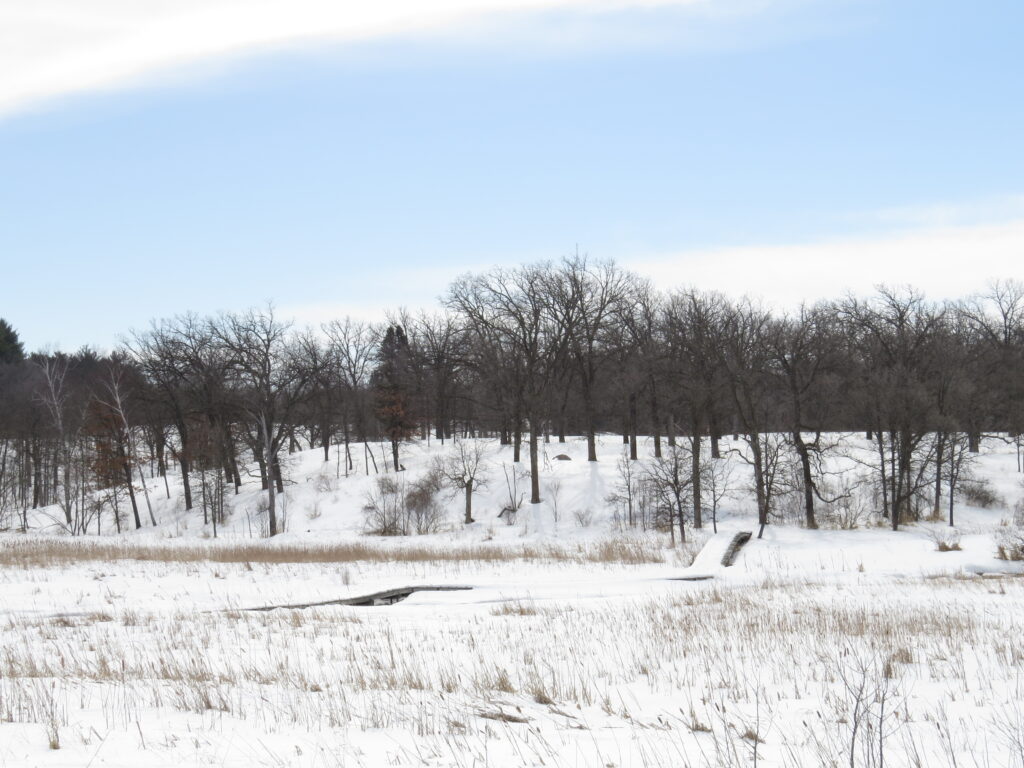
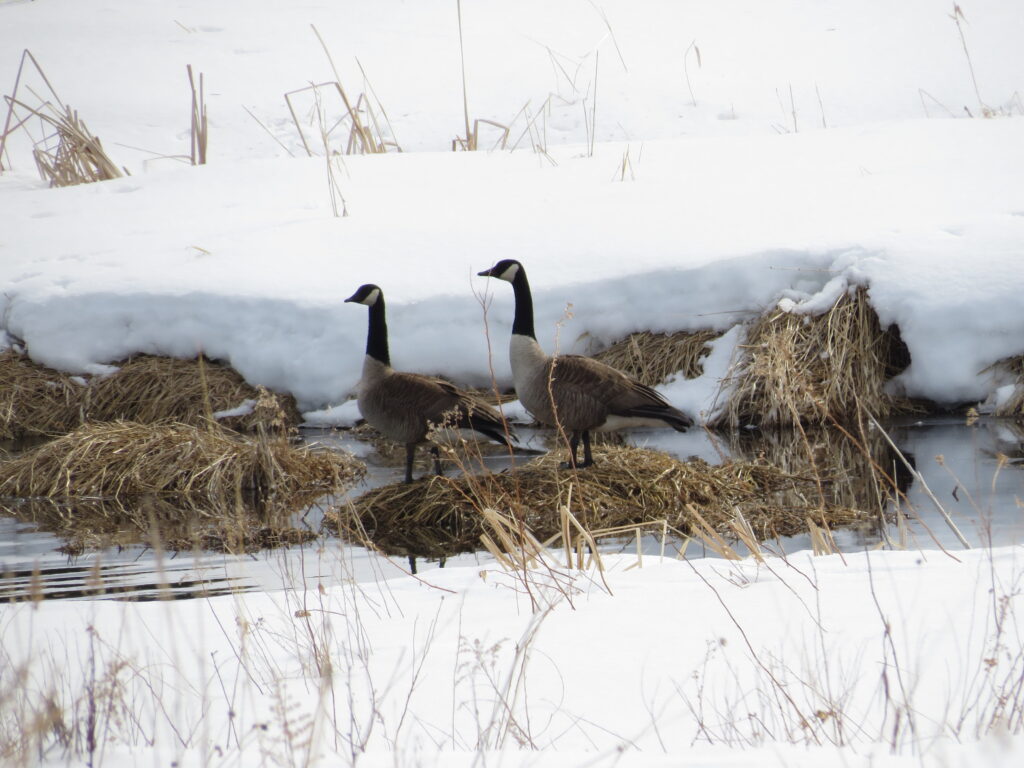
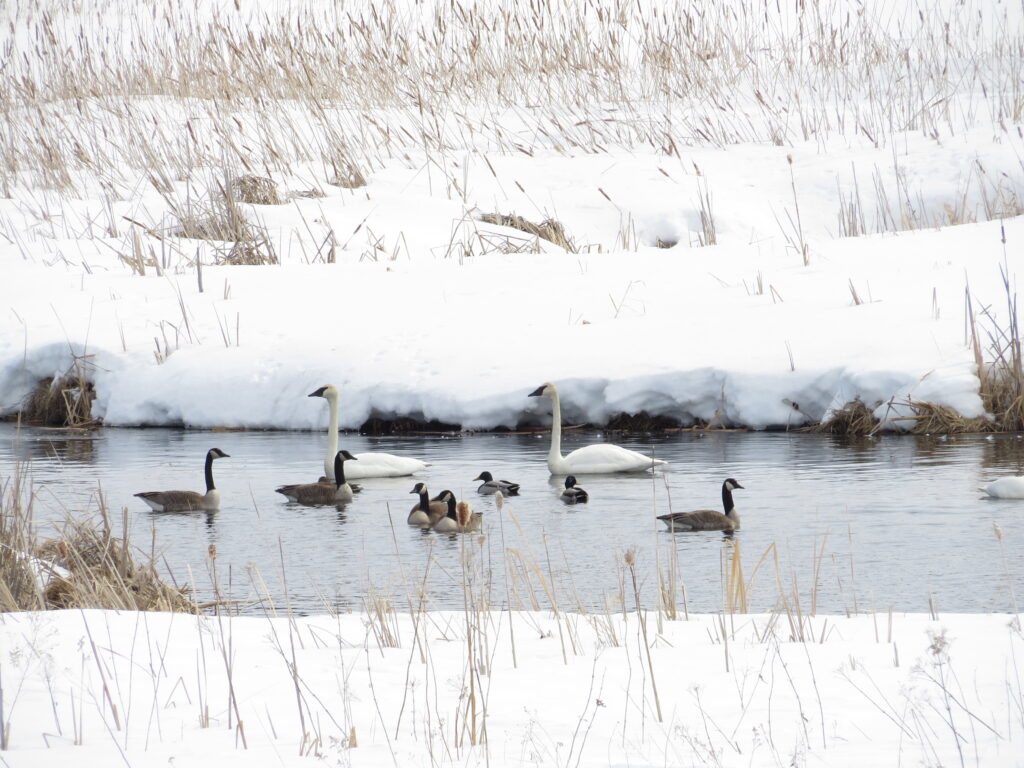
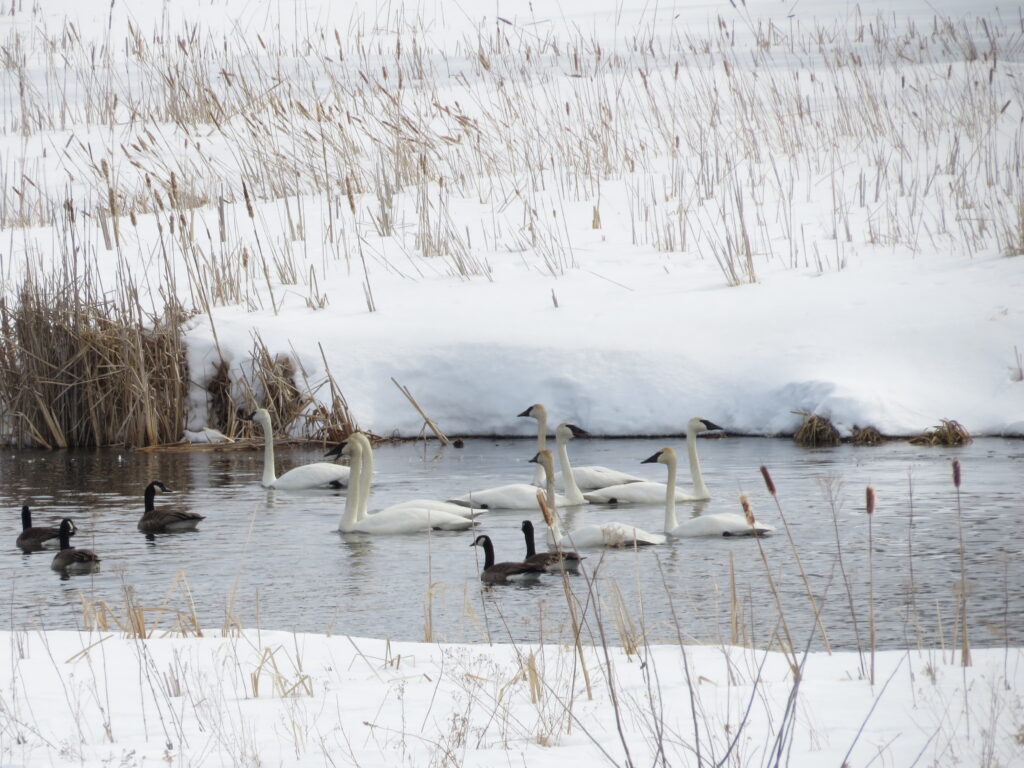
There was another sound I had heard many times before—the rattling trill of a Sandhill Crane. He stood on the frozen embankment of the flowing creek, looking like an unhappy camper, wondering why his return flight to Minnesota had landed him in the frozen tundra. He ruffled his feathers and called out in irritation.
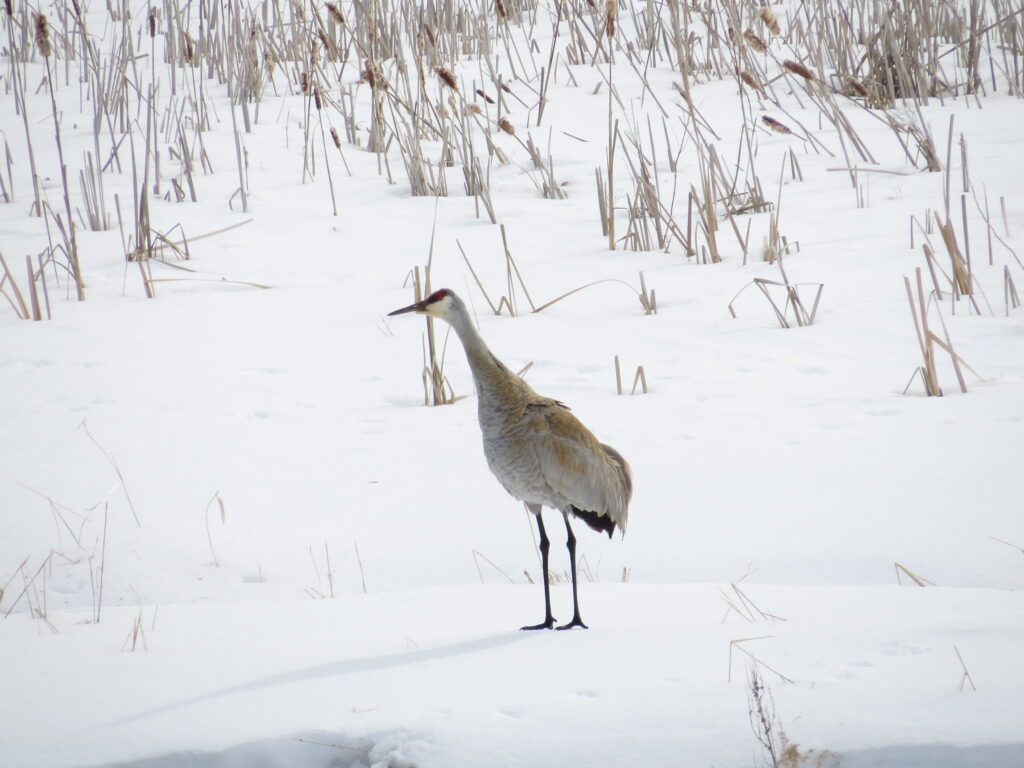
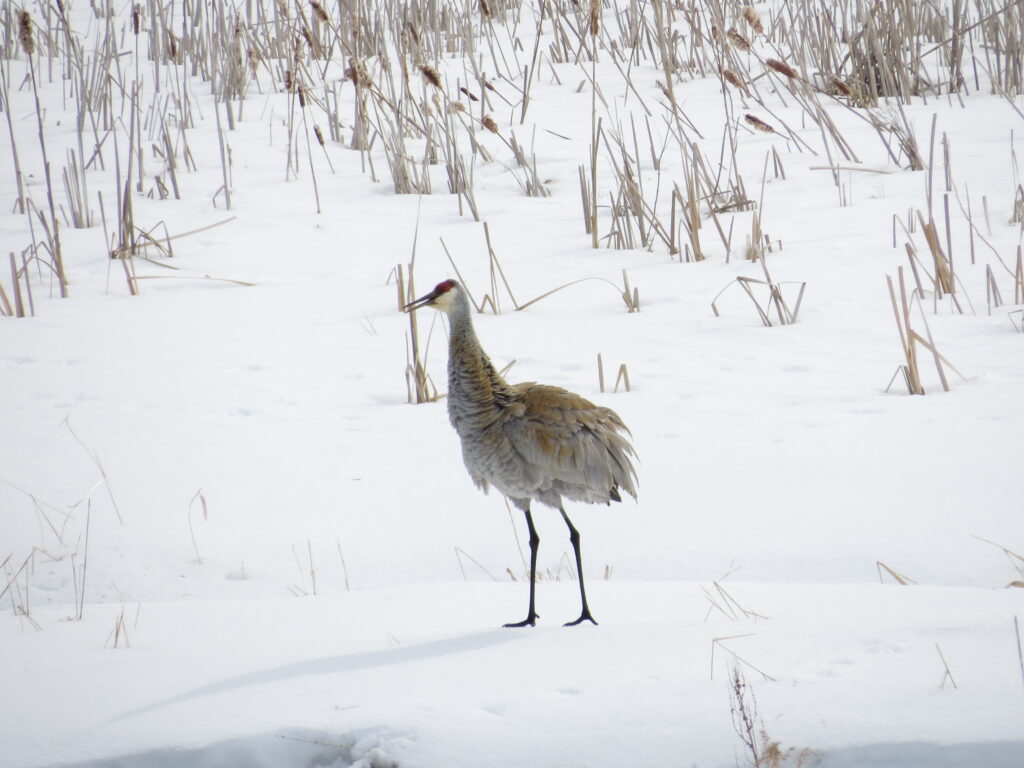
I was the intruder everyone was talking about—the geese voiced their faux alarm, but not one flew away. The Trumpeter swans were more sensitive and took to flight along with their vocal dismay.
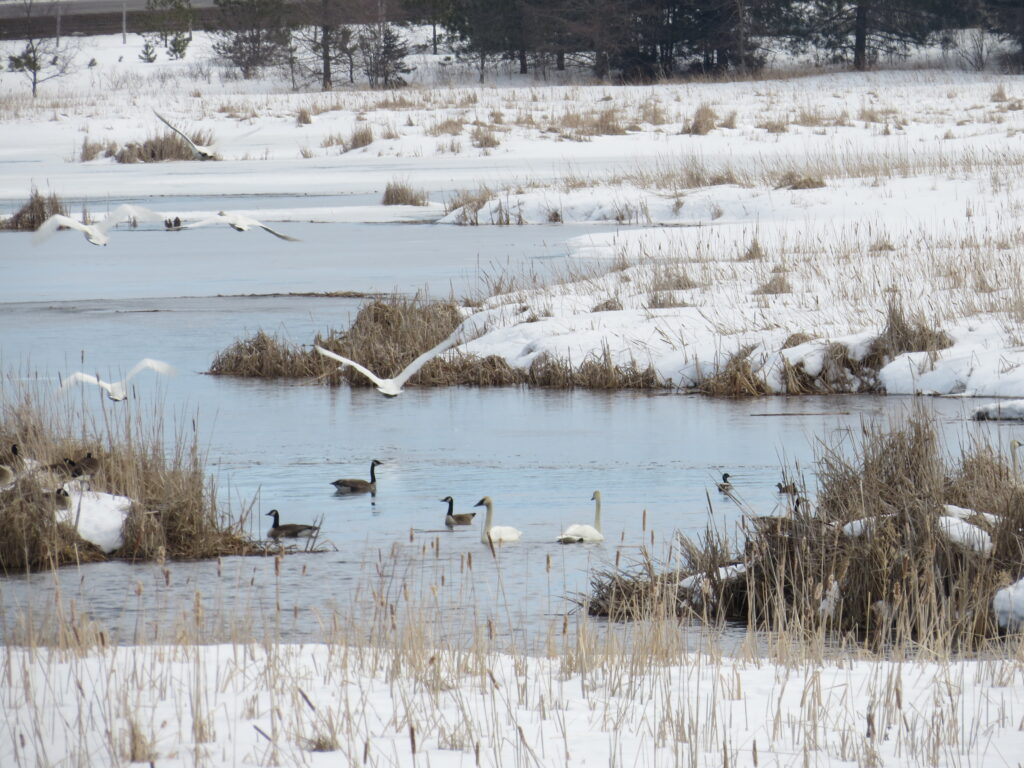
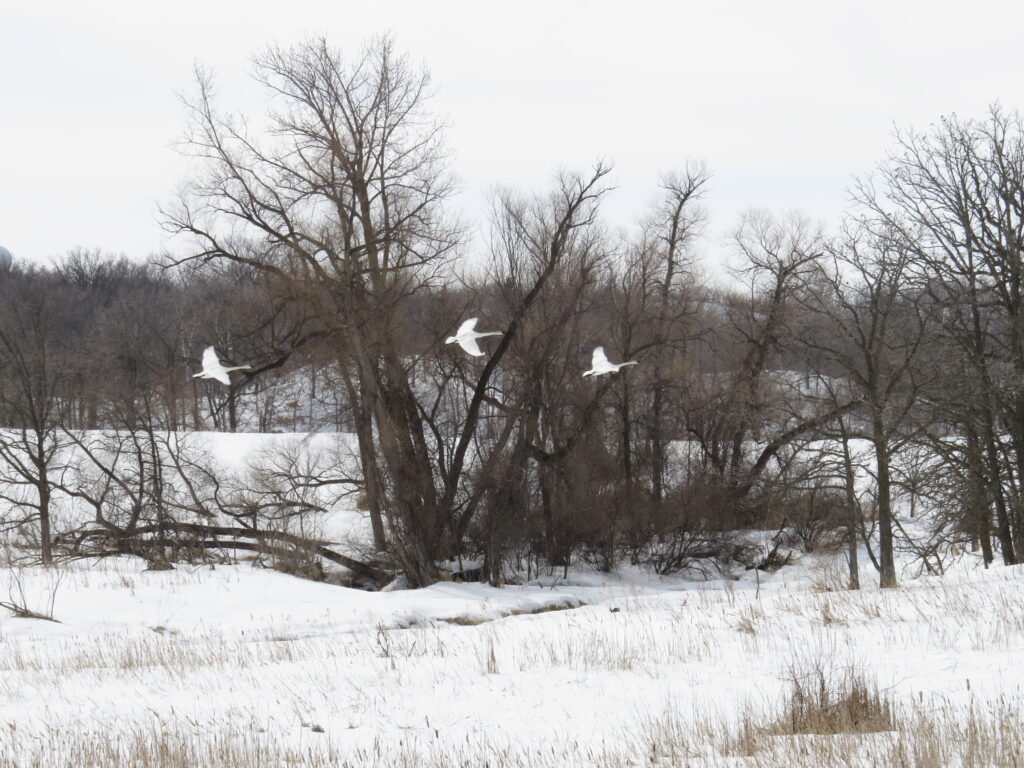
Mr. Sandhill Crane kept up his rattley chatter as he surveyed me walking closer and all of his waterfowl friends below him in the creek.
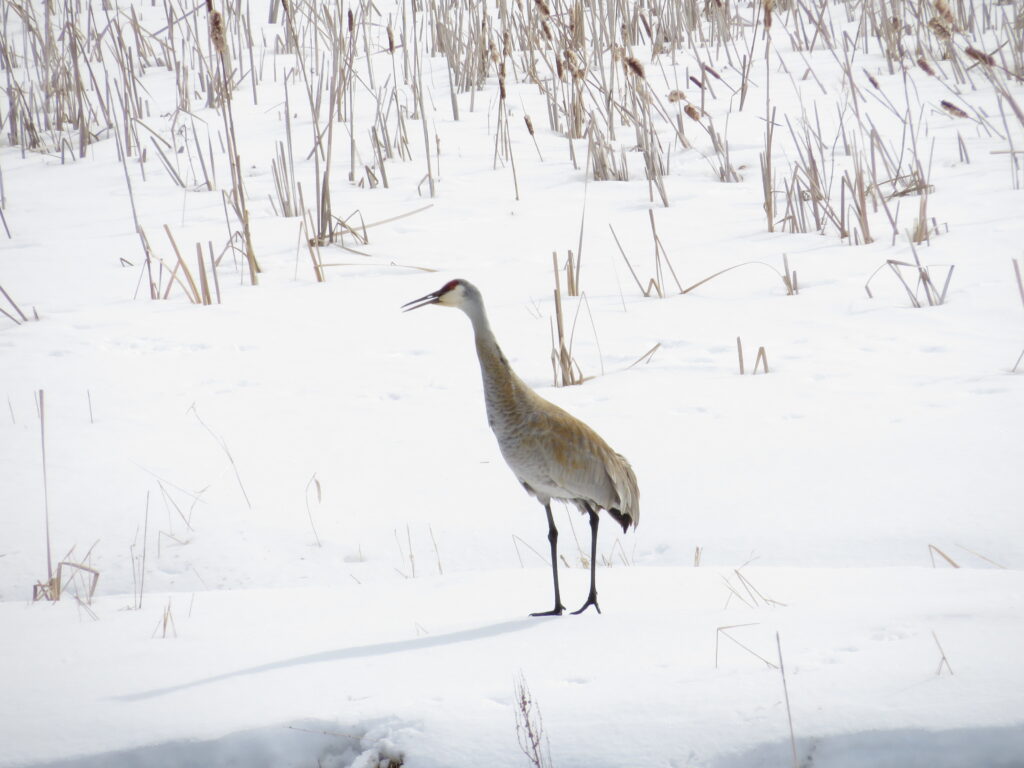
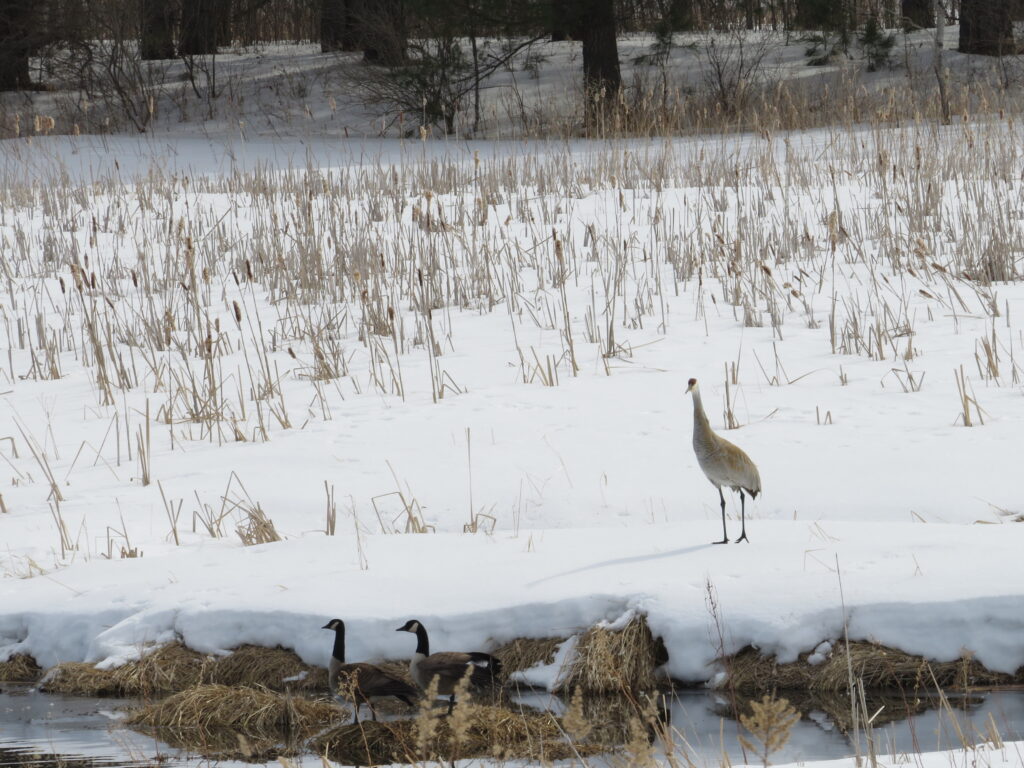
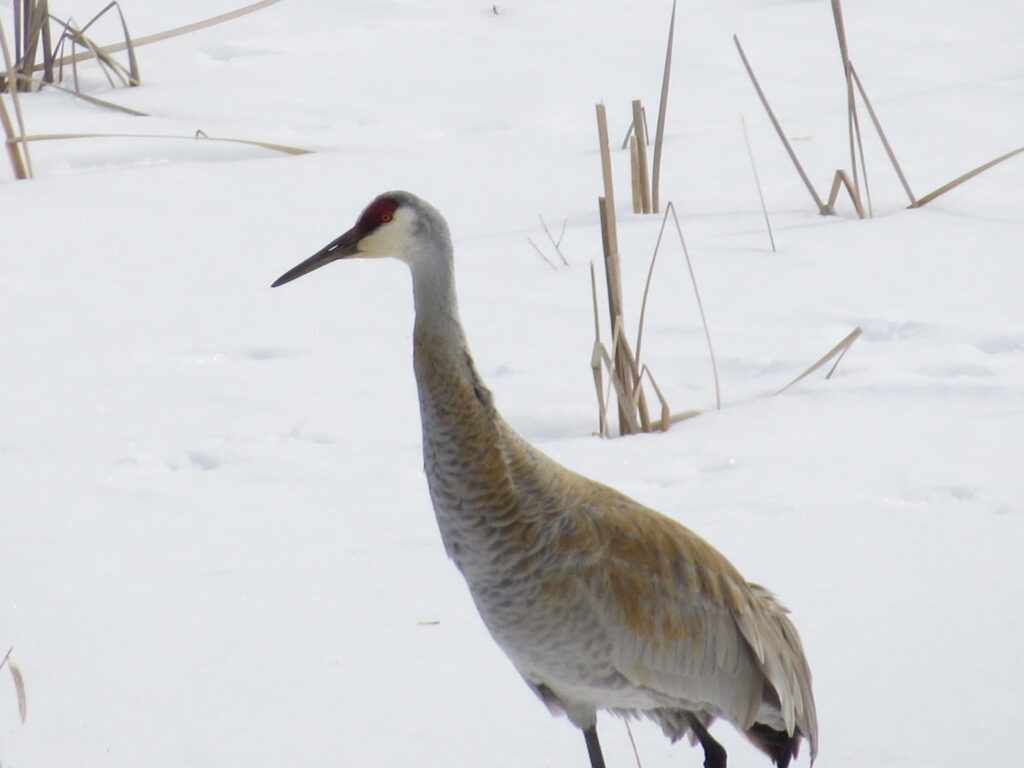
Then he slowly ambled away from the creek into the stalks of cattails, pretending to find a morsel of food to peck at but moving on with disappointment.
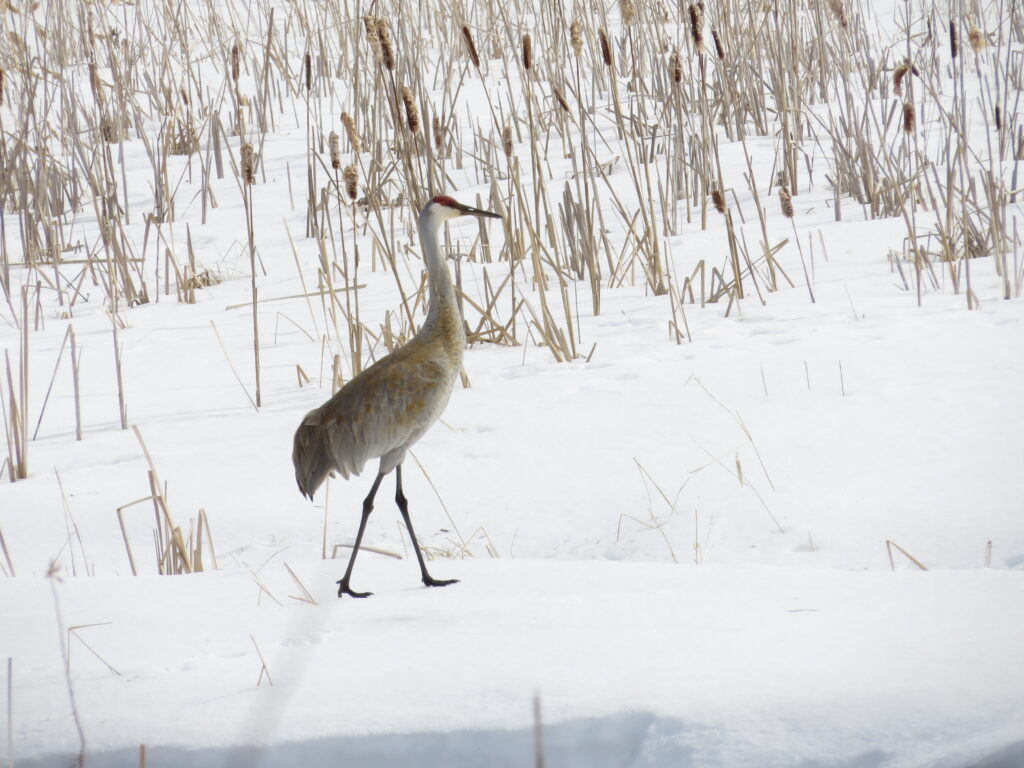
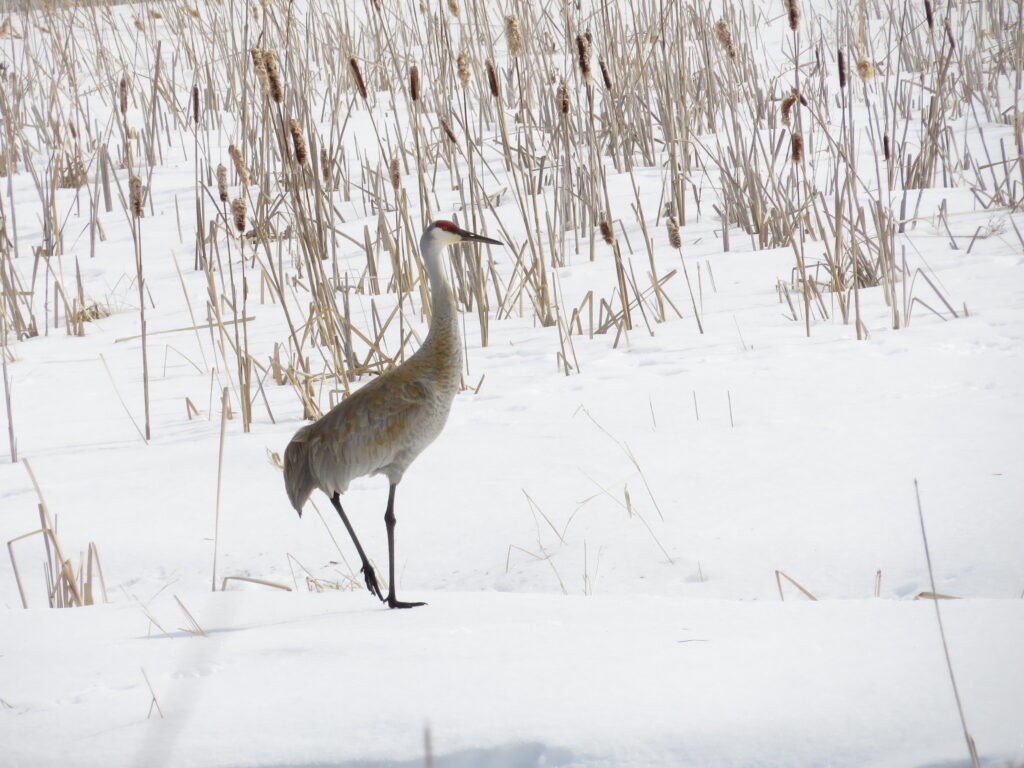
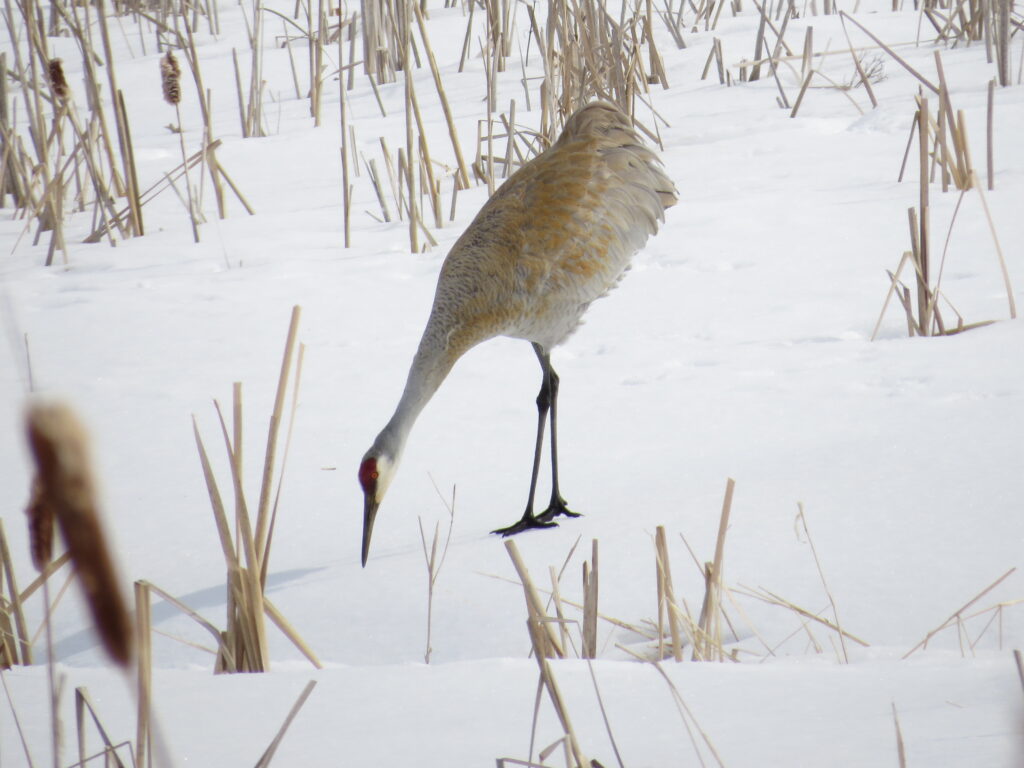
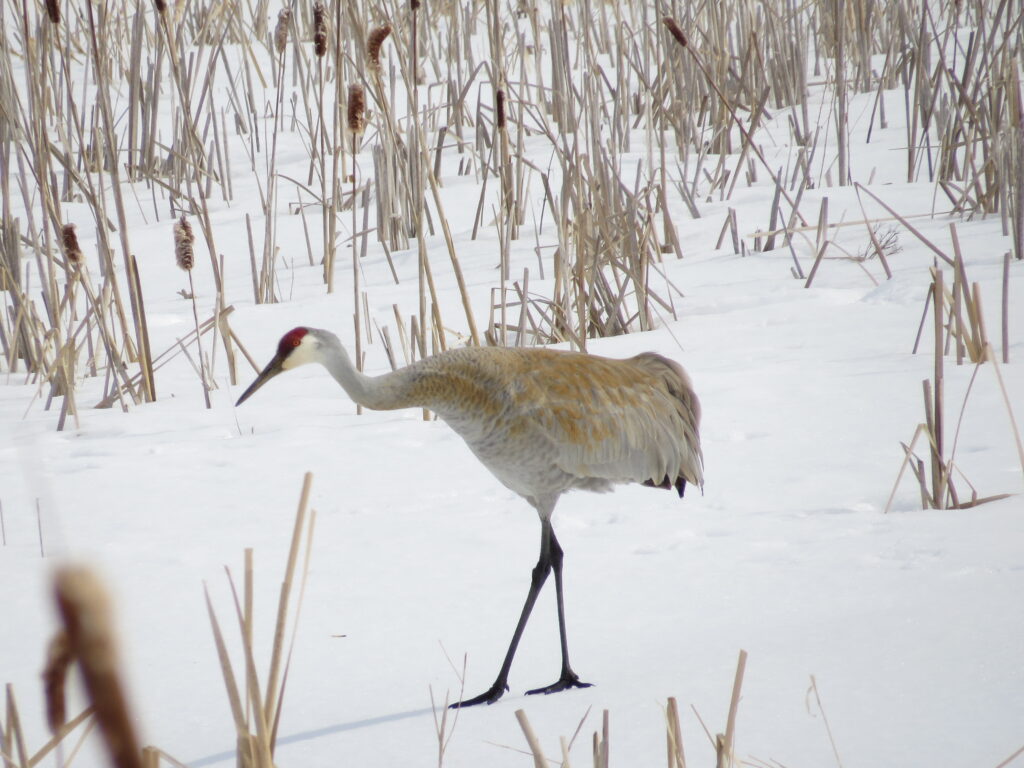
I left the wetland and shoed through drifts and a broken, uneven path to the forest. With a deep sigh of contentment, I knew I had felt this way before, and it was good.
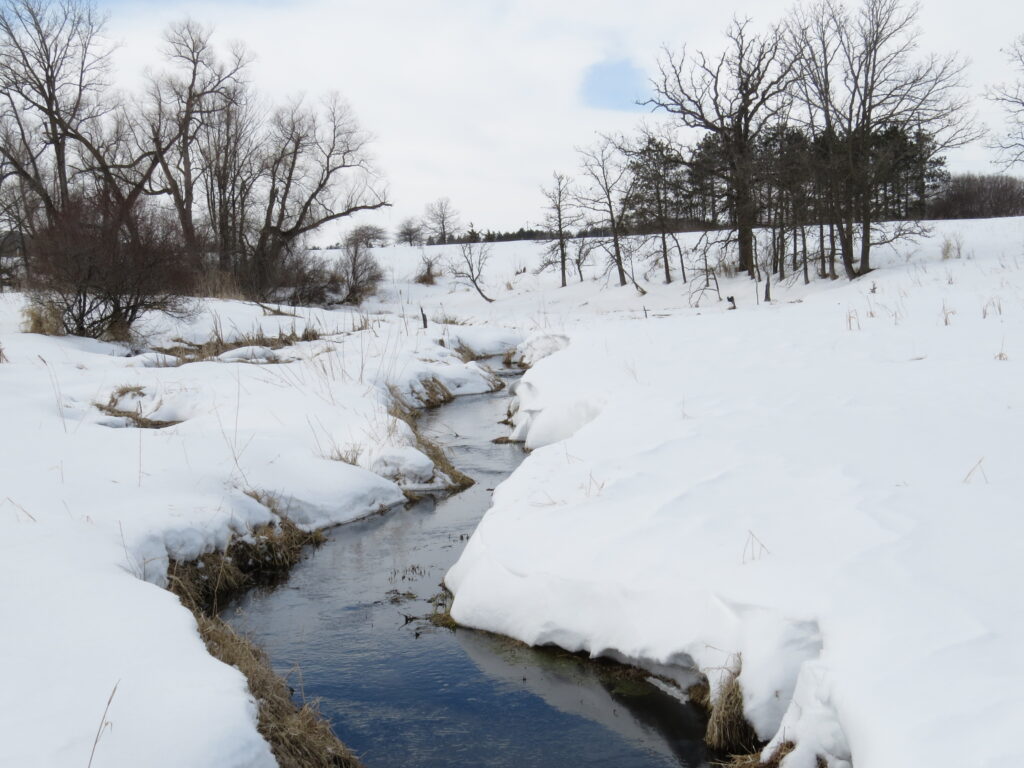
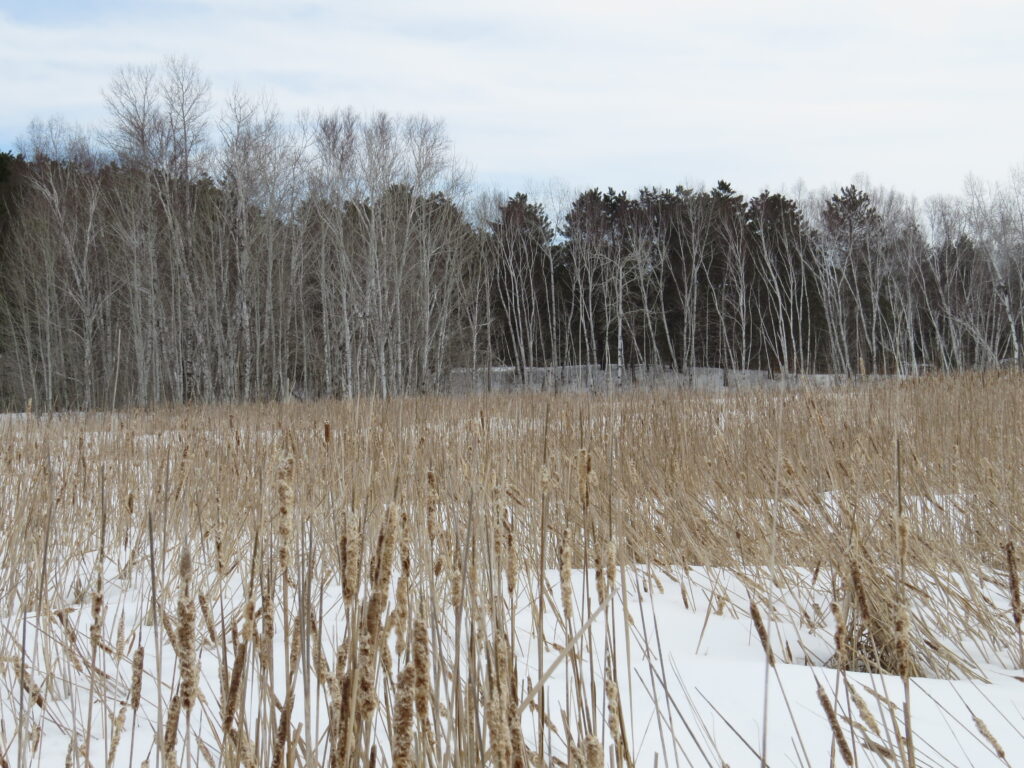
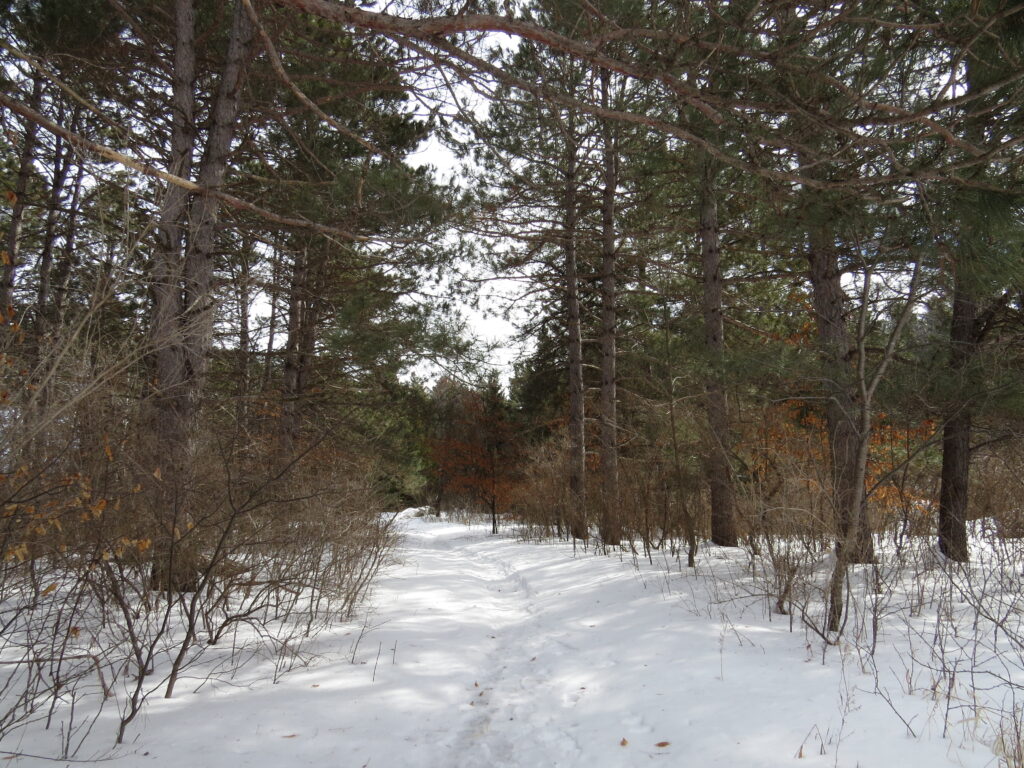
The dark-trunked Maple trees threw shadows on the deep snow, but I knew they were warming up for Spring. With daytime temps reaching above the freezing mark, the sap was beginning to stir in their roots. The below–freezing temps at night settle it back down, and that temperature gradient becomes the ‘pump’ that gets the sap flowing, ready for the harvesting for Maple syrup. I also imagined the Spring Ephemeral wildflowers under the soil, under the snow, that would be blooming before the trees could even unfurl their leaves. Old friends that are always a joy to see.
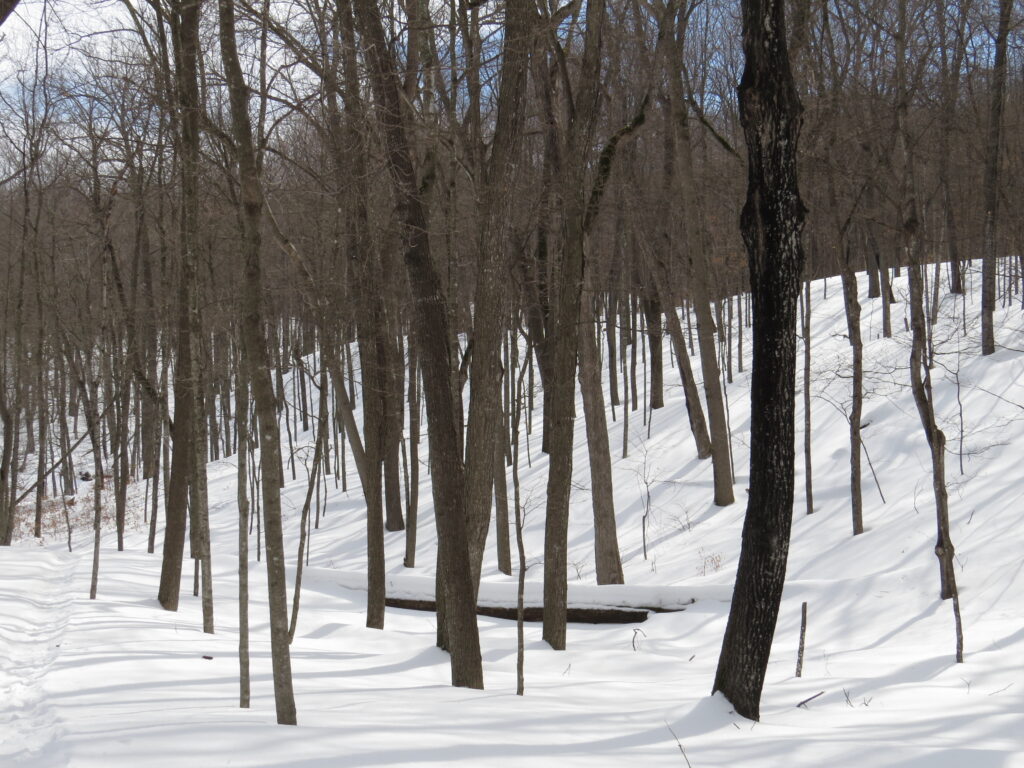
Circling around to the other snow-covered boardwalk that spans the wetland, I heard the waterfowl chatter again, along with some nearby Crane talk.
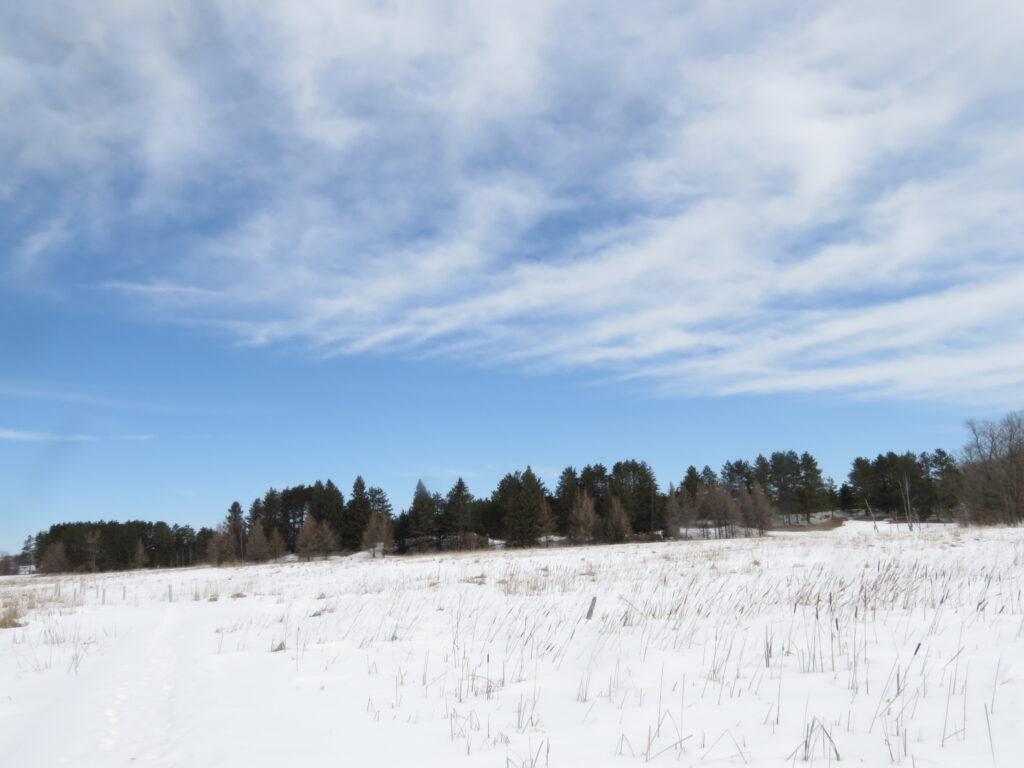
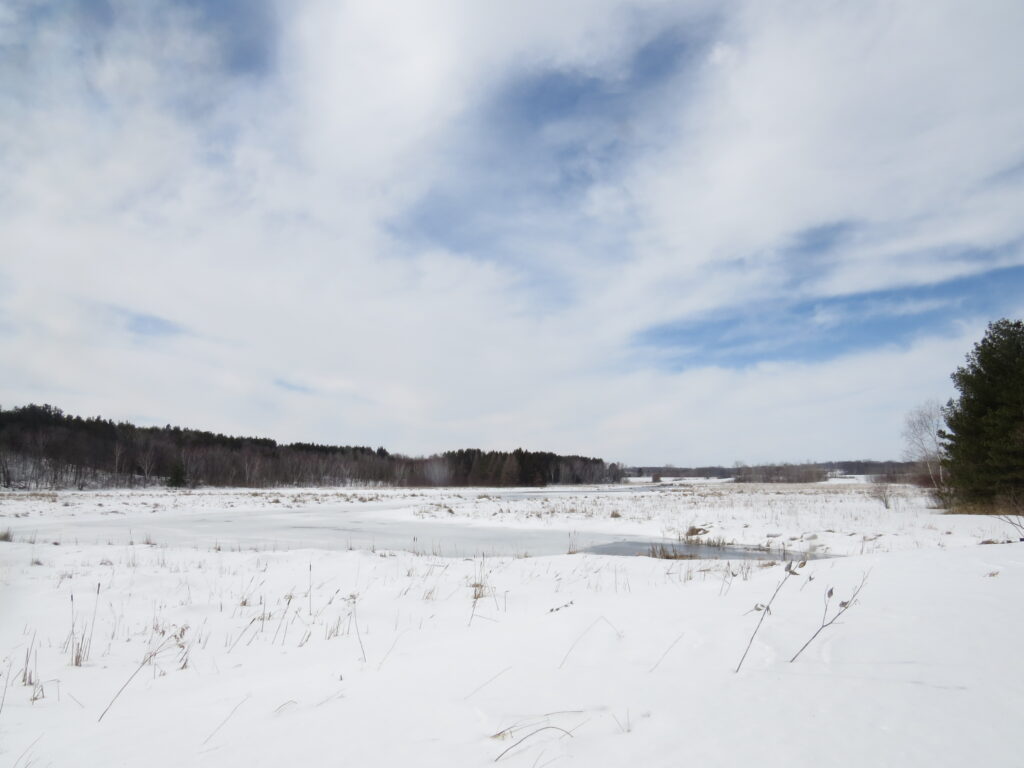
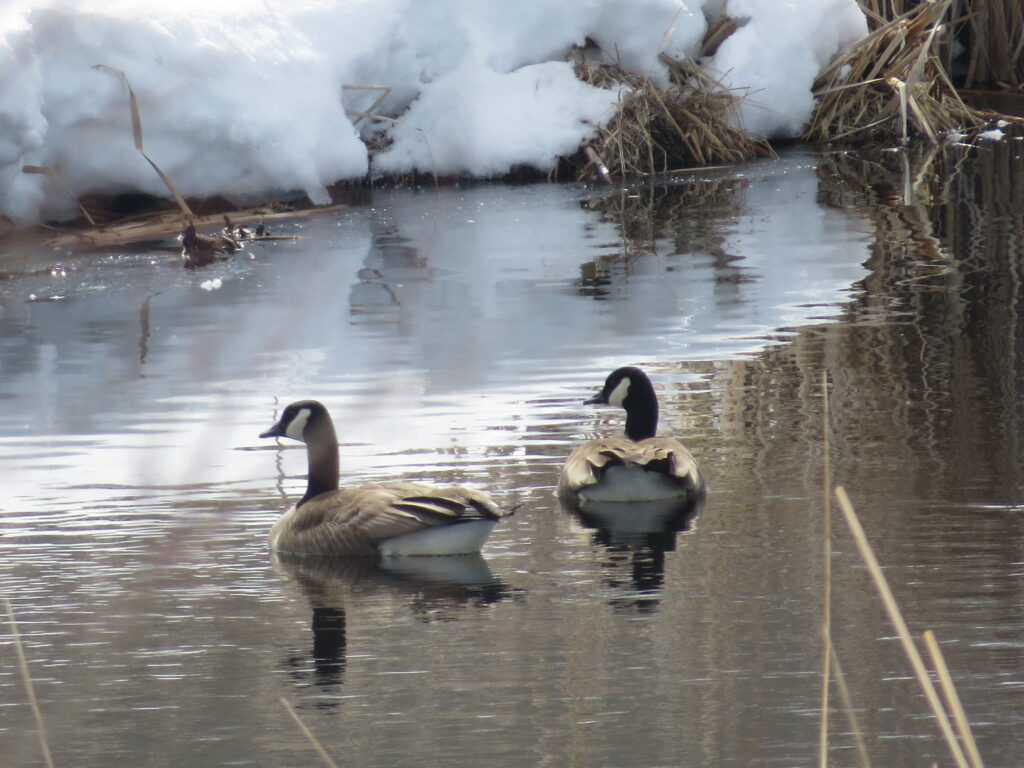
This time, there were three red-headed cranes in the cattails! It looked like a mated pair and their colt from last year. The offspring may migrate back to their usual spot with the parents, but once the nesting begins, he will be ‘chased away’ to begin his solitary life for two to six more years before he finds his lifetime mate.
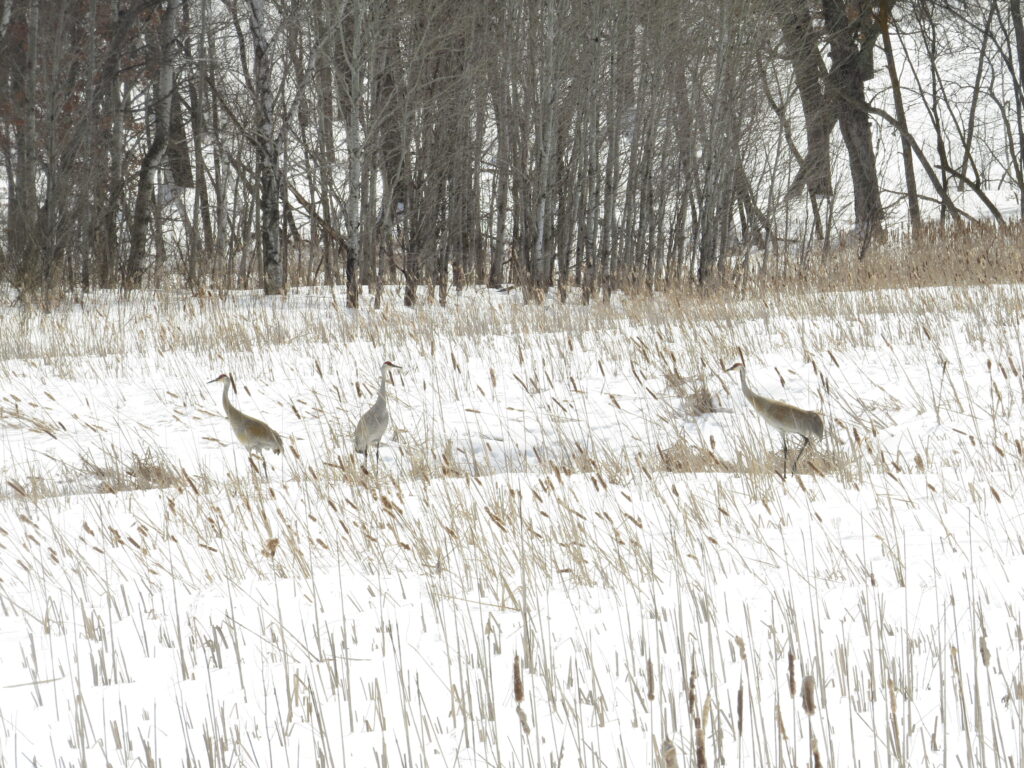
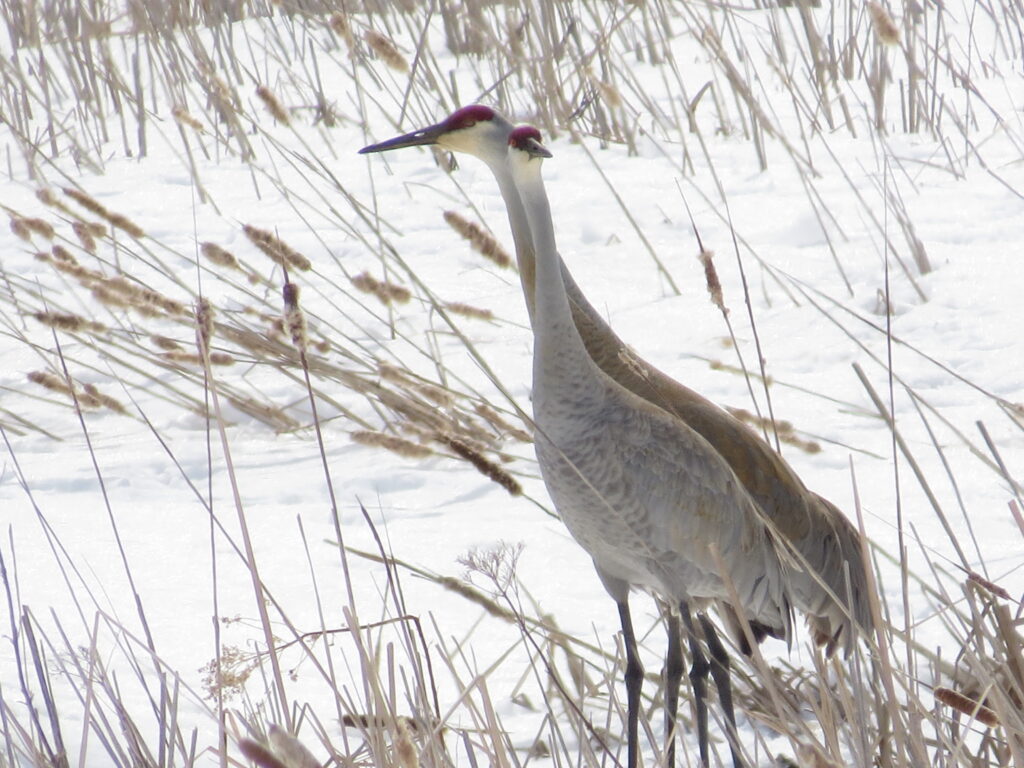
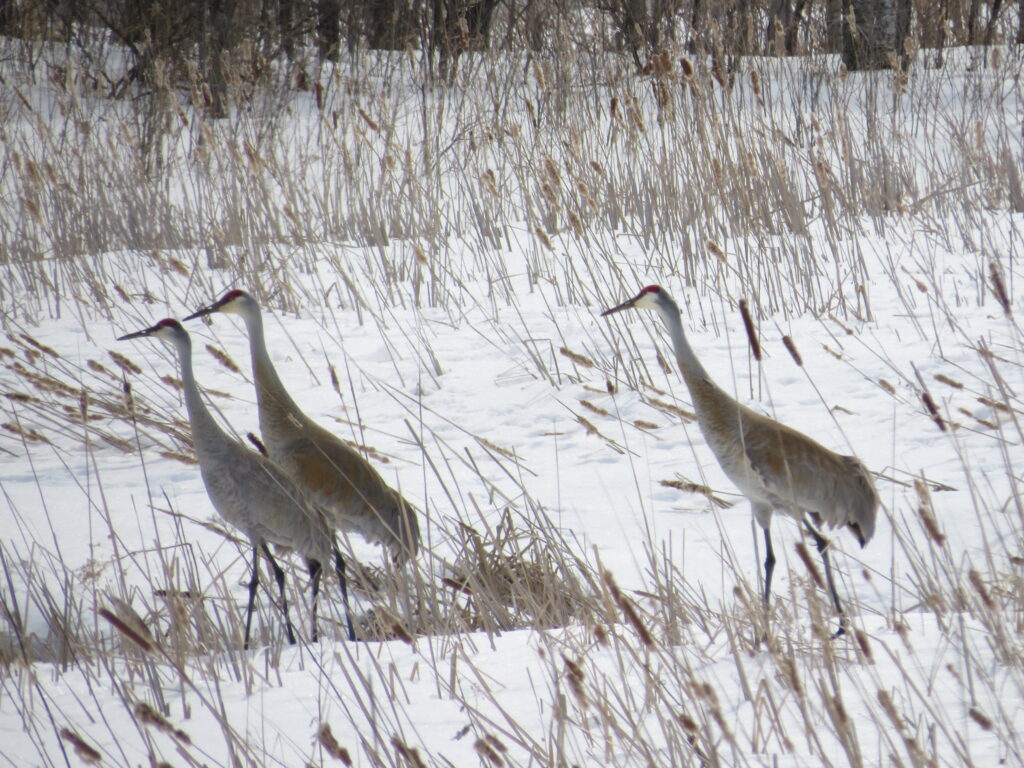
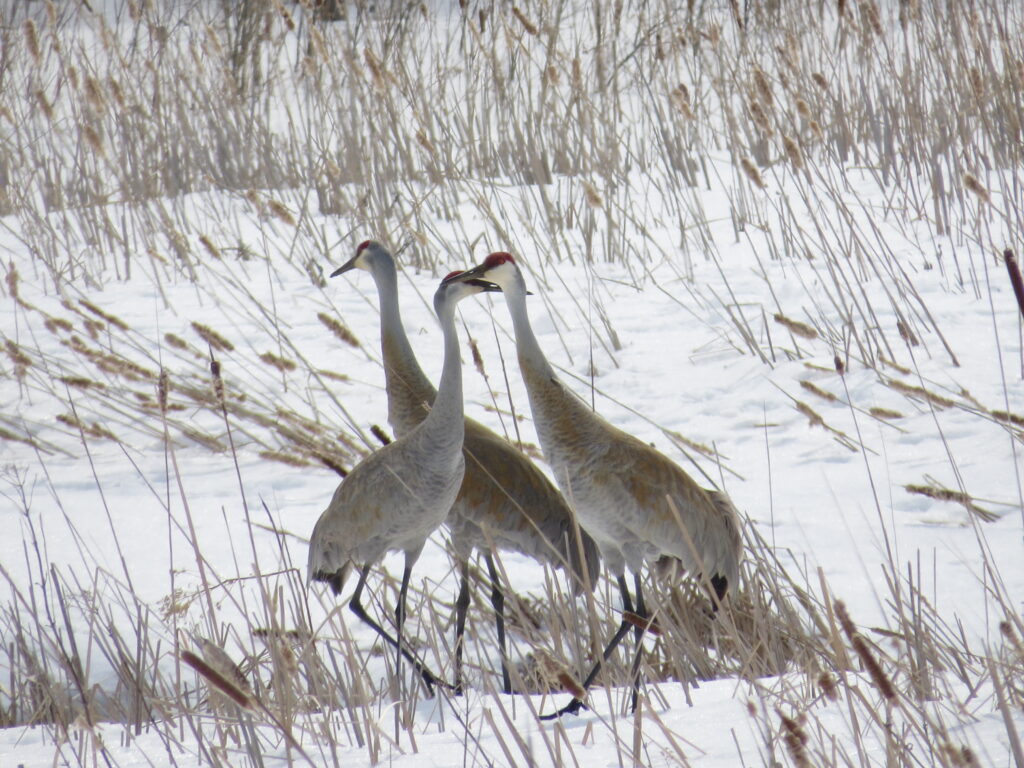
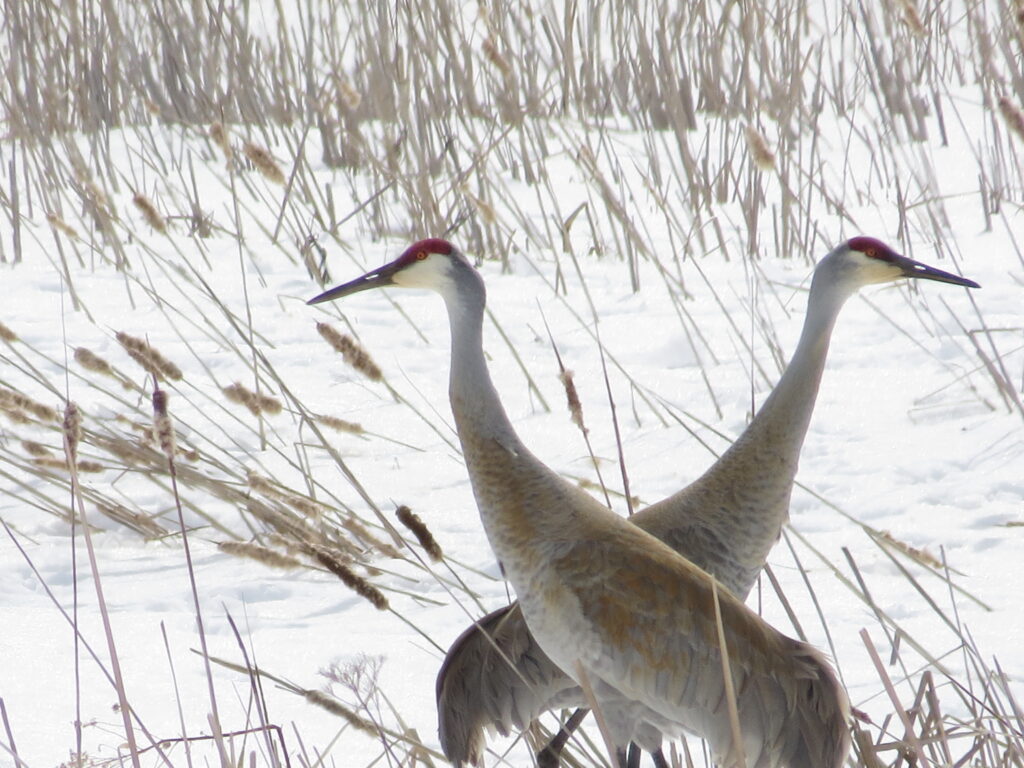
Addition and Subtraction. The way of Nature. The way of Winter into Spring. The way we learn and discern. Most everything I saw, heard, and felt on my Thursday snowshoe hike was familiar to me, and I welcomed it into my life once again with a resounding “Yes!” At the same time, new details of deep snow, new birds, and Spring clouds made my experience ‘something more.’ We have to be careful not to fall through the ice of expecting our surroundings to change because of our displeasure. Mr. Sandhill Crane had some unfortunate seasonal timing in his migration and nesting schedule, but he will have to ‘wait it out’ while the sun and tilt of the Earth do their work. We want to be conscious and truthful about our own lives, our own words and actions. It is the responsibility and privilege that Life bestows upon us. Good luck with your assignment!